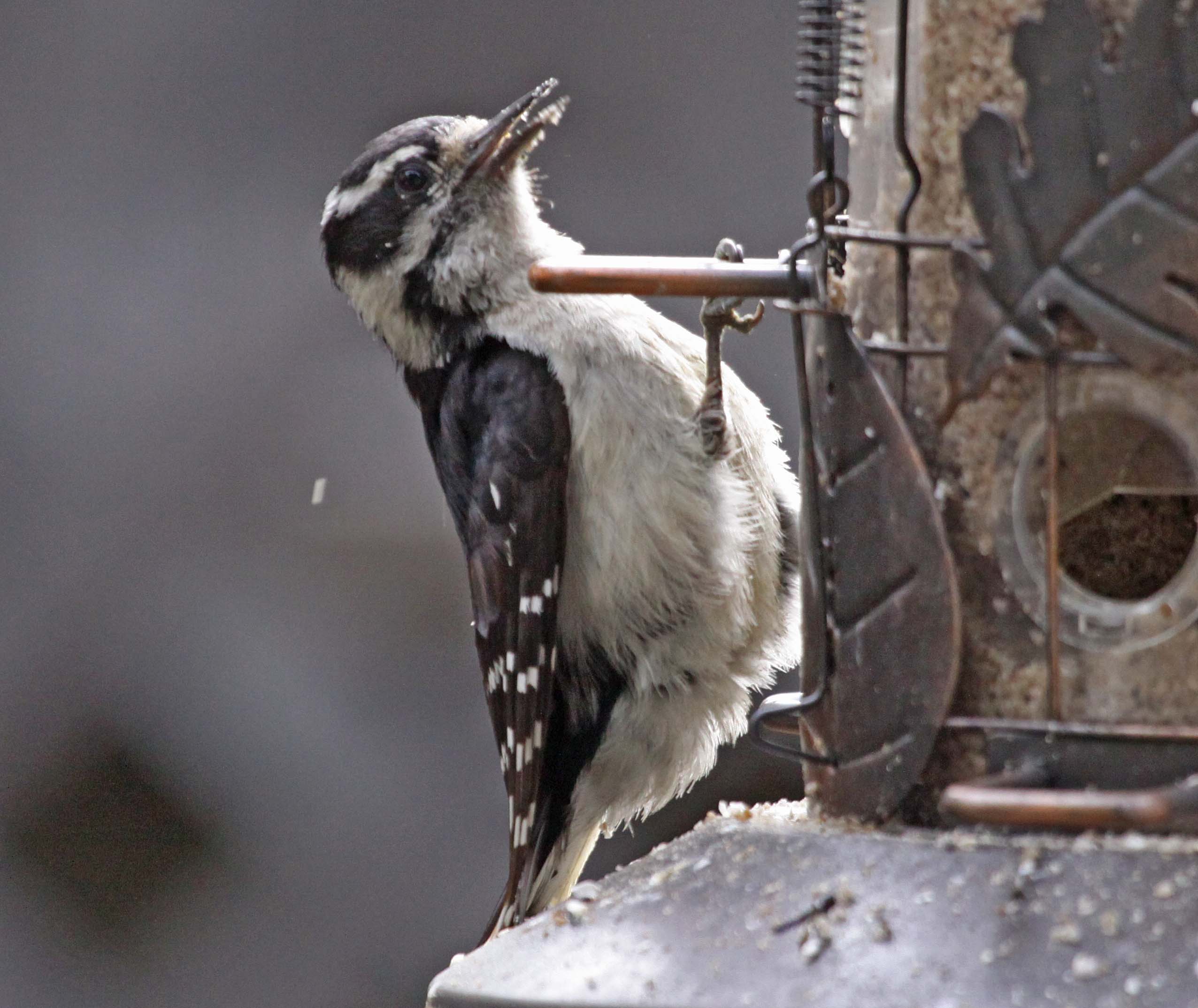

Hairy woodpeckers have a smaller doppelganger. Birds eastward of the mountains are more spotted, while birds to the west are not.ħ. The dividing line between these two types of Hairy woodpeckers lies in the Rocky Mountains range. West of the Rockies’, hairy’s have nearly solid black wings that display much fewer white spots. There are two varieties of Hairy woodpeckers: Rocky Mountain or Western and Eastern.Įastern Hairy woodpeckers have wider face stripes and more white spots on their wings. Their look varies according to what part of their range you are in.
#Hairy woodpecker Patch
They have a bright red patch of feathers at the back of their heads. Hairy woodpecker males have just one difference compared to females. There is a tawny brown tuft of feathers at the base of the bill, and the bill is about the same length as the length of their head. Their faces are a mixture of black and white stripes which radiate outward from the bill. Males may have a little bit more color, but overall, they are similar and may even be hard to tell apart.Īll hairy woodpeckers have a white chest and belly, white central back stripe, and black wings with white spots in several lines.

The male and female of most woodpecker species look the same with only slight differences. They don’t migrate, so you have an equal chance of spotting them in your backyard year-round. Some populations even live in central Mexico and Central America! Hairy woodpeckers have adapted to life throughout most of North America. Hairy woodpeckers live throughout most of the United States and Canada. Hairy woodpecker looking for insects, Image credit: birdfeederhub 4. The baby woodpeckers grow quickly and acclimate fast. Instead of an elaborately constructed nest at the bottom of the hollow, the female only adds a layer of wood chips. They make their nest in a cavity within an alive but rotting tree or dead tree. Mated pairs prepare a nest just two weeks after getting together. Most woodpeckers are cavity nesters, and the Hairy woodpecker is no different.

This provides them with enough insects and water to live and raise chicks. In the plains and semi-arid deserts of the Southwest, they congregate in stands of trees near streams and rivers. Populations thrive throughout North America, but you won’t see them in the true deserts, Arctic, or in the mountains above the tree line. This bird uses trees for food, nesting material, and shelter. They will live anywhere with trees.Ī hairy woodpecker relies on forest, or at least a few trees, for everything. Meanwhile on the hairy woodpecker, the feathers are longer and less fluffy, with a more hair-like appearance. The feathers are shorter and more “downy” in appearance on the downy woodpecker. Hairy woodpeckers aren’t named very descriptively – they have feathers, not hair! The moniker is often attributed to a difference with their smaller cousin, the downy woodpecker.īoth the downy and the hairy woodpecker have a patch of white feathers along the middle of their back. In this article we will learn 12 facts about hairy woodpeckers, a common black and white backyard species. Those of us lucky enough to live near forests or woodlands can hear their persistent drumming throughout the spring and summer months, or calling from high up in the trees. Woodpeckers are often a favorite species in the United States and Canada.


 0 kommentar(er)
0 kommentar(er)
